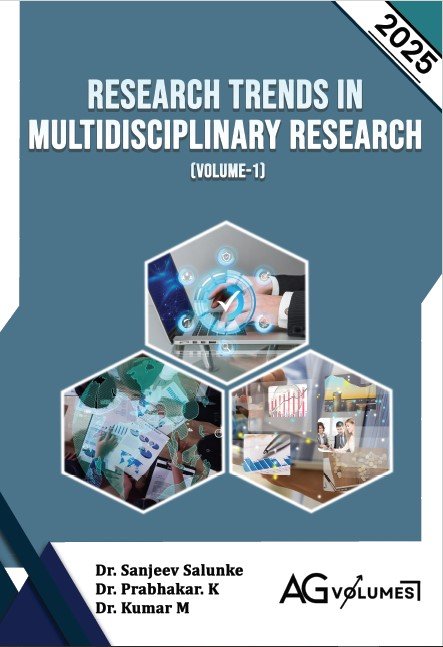Role of Dietary Fiber in Chronic Disease Prevention: A Comprehensive Review
Keywords:
Dietary Fiber, Chronic Disease, Prevention, Human Health, Cardiovascular Disease, Type II Diabetes, Obesity, InflammationAbstract
Dietary fibre is vital to human health and may be found in plant-based meals. It comes in two varieties, soluble and insoluble, both of which have important health advantages. The purpose of this article is to review the diverse literature that has been conducted on the function of dietary fibre in the prevention of chronic diseases. This review emphasises the critical role that dietary fibre plays in avoiding chronic conditions such obesity, type II diabetes, cardiovascular disease, and inflammation. Better insulin sensitivity, weight control, and general metabolic health are all facilitated by both insoluble and soluble fibres. Improving assessment tools and establishing a harmonised global definition are indispensable for the advancement of public health policies and research. The promotion of fiber-rich diets through the consumption of fruits, vegetables, whole cereals, and legumes, as well as the provision of affordable nutritious foods and education, is essential. In order to improve long-term results and lower illness burdens across a variety of groups, healthcare practitioners should include fibre recommendations into the treatment of chronic diseases.
References
[1] R. Bharsat, A. Kocharekar, and Y. Mistry, "Evaluating Drinking Water Quality Using Water Quality Parameters and Esthetic Attributes: A Statistical Approach," Int. J. Innov. Sci. Eng. Manag., vol. 3, no. 2, 2024,https://doi.org/10.1177/11786221221075005
[2] N. M. McKeown, G. C. Fahey, J. Slavin, and J. W. Van Der Kamp, "Fibre intake for optimal health: how can healthcare professionals support people to reach dietary recommendations?," BMJ, 2022,https://doi.org/10.1136/bmj-2020-054370
[3] A. Suresh et al., "Dietary fiber: an unmatched food component for sustainable health," Food Agric. Immunol., vol. 35, no. 1, 2024,https://doi.org/10.1080/09540105.2024.2384420
[4] P. Kshatriya and P. Richhariya, "Enhancing Diabetes Detection Accuracy using an Ensemble Model of Random Forest and SVM," Int. J. Innov. Sci. Eng. Manag., vol. 2, no. 3, pp. 30-38, 2023.
[5] Y. He et al., "Effects of dietary fiber on human health," Food Sci. Hum. Wellness, vol. 11, 2022,https://doi.org/10.1016/j.fshw.2021.07.001
[6] A. M. Stephen et al., Dietary fibre in Europe: Current state of knowledge on definitions, sources, recommendations, intakes and relationships to health, vol. 30. 2017.https://doi.org/10.1017/S095442241700004X
[7] F. Zeinali, M. Samadi, and N. Hojjati, "The Beneficial Effects of Fiber on Major Chronic Diseases: A Review of Evidence," J. Nutr. Food Secur., vol. 3, no. 4, 2018,https://doi.org/10.18502/jnfs.v3i4.167
[8] S. Lockyer, A. Spiro, and S. Stanner, "Dietary fibre and the prevention of chronic disease - should health professionals be doing more to raise awareness?," Nutr. Bull., vol. 41, no. 3, pp. 214-231, 2016,https://doi.org/10.1111/nbu.12212
[9] D. Nitzke, J. Czermainski, C. Rosa, C. Coghetto, S. A. Fernandes, and R. B. Carteri, "Increasing dietary fiber intake for type 2 diabetes mellitus management: A systematic review," World J. Diabetes, vol. 15, no. 5, 2024,https://doi.org/10.4239/wjd.v15.i5.1001
[10] X. Bai, L. Huang, and Y. He, "Visualising and analysing the research trends of dietary fiber: a bibliometric study," Discov. Appl. Sci., vol. 7, 2025,https://doi.org/10.1007/s42452-025-06969-4
[11] H. Ma et al., "Trends in the burden of chronic diseases attributable to diet-related risk factors from 1990 to 2021 and the global projections through 2030: a population-based study," Front. Nutr., vol. 12, 2025,https://doi.org/10.3389/fnut.2025.1570321
[12] J. Liang, Y. Wen, J. Yin, G. Zhu, and T. Wang, "Utilization of plant-based foods for effective prevention of chronic diseases: a longitudinal cohort study," npj Sci. Food, vol. 8, 2024,https://doi.org/10.1038/s41538-024-00362-y
[13] M. Pereira, A. Valado, P. Antunes, and L. Pereira, "Dietary Fiber in Preventing Non-Communicable Diseases: Predicting Prevented Deaths and Economic Impact through the Use of Algae as a Fiber Source," Recent Prog. Nutr., vol. 04, no. 02, 2024,https://doi.org/10.21926/rpn.2402006
[14] T. M. Barber, S. Kabisch, A. F. H. Pfei, and M. O. Weickert, "The Health Benefits of Dietary Fibre," Nutrients, vol. 12, 2020.https://doi.org/10.3390/nu12103209
[15] S. Kabisch, J. Hajir, V. Sukhobaevskaia, M. O. Weickert, and A. F. H. Pfeiffer, "Impact of Dietary Fiber on Inflammation in Humans," Int. J. Mol. Sci., vol. 26, 2025,https://doi.org/10.3390/ijms26052000
[16] L. Zhang et al., "The Impact of Dietary Fiber on Cardiovascular Diseases: A Scoping Review," Nutrients, vol. 17, no. 3, 2025,https://doi.org/10.3390/nu17030444
[17] L. A. Alahmari, "Dietary fiber influence on overall health, with an emphasis on CVD, diabetes, obesity, colon cancer, and inflammation," Front. Nutr., vol. 11, 2024,https://doi.org/10.3389/fnut.2024.1510564
[18] H. A. Jama, M. Snelson, A. E. Schutte, J. Muir, and F. Z. Marques, "Recommendations for the Use of Dietary Fiber to Improve Blood Pressure Control," Hypertension, vol. 81, 2024,https://doi.org/10.1161/HYPERTENSIONAHA.123.22575
[19] G. Dharmatti, N. S. Singh, and A. A. Ghag, "Dietary Fiber in the Management of Type 2 Diabetes Mellitus," Chron. Diabetes Res. Pract., vol. 2, 2023,https://doi.org/10.4103/cdrp.cdrp_21_22
[20] I. Fatima, I. Gamage, R. J. R. De Almeida, P. Cabandugama, and G. Kamath, "Current Understanding of Dietary Fiber and Its Role in Chronic Diseases," Mo. Med., vol. 120, no. 5, 2023.
[21] I. S. Waddell and C. Orfila, "Dietary fiber in the prevention of obesity and obesity-related chronic diseases: From epidemiological evidence to potential molecular mechanisms," Crit. Rev. Food Sci. Nutr., vol. 63, no. 27, 2023,https://doi.org/10.1080/10408398.2022.2061909
[22] X. Xu, J. Zhang, Y. Zhang, H. Qi, and P. Wang, "Associations between dietary fiber intake and mortality from all causes, cardiovascular disease and cancer: a prospective study," J. Transl. Med., vol. 20, 2022,https://doi.org/10.1186/s12967-022-03558-6




